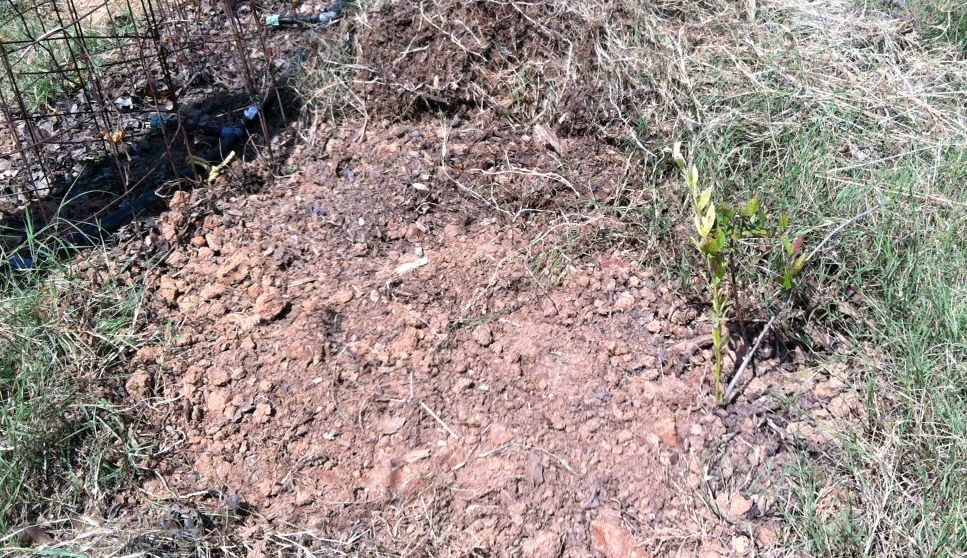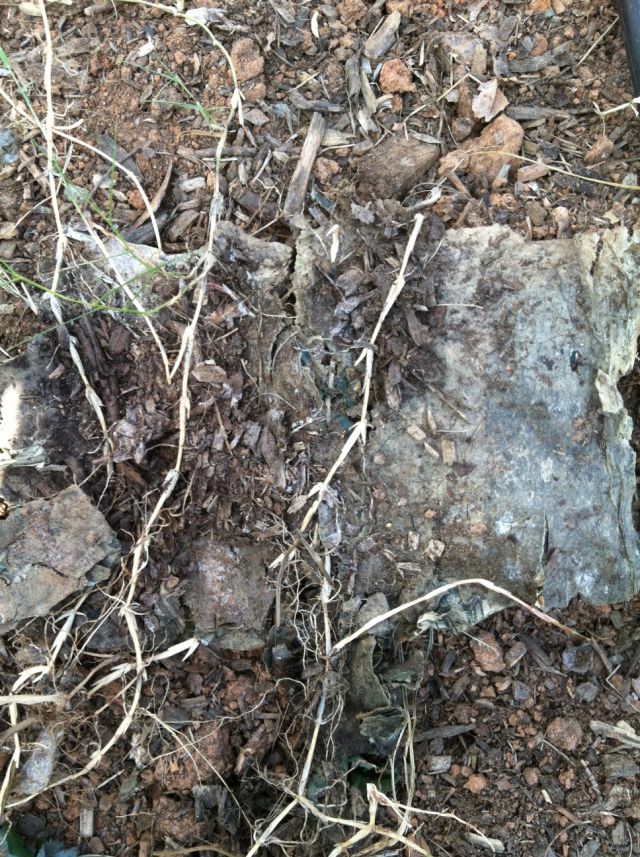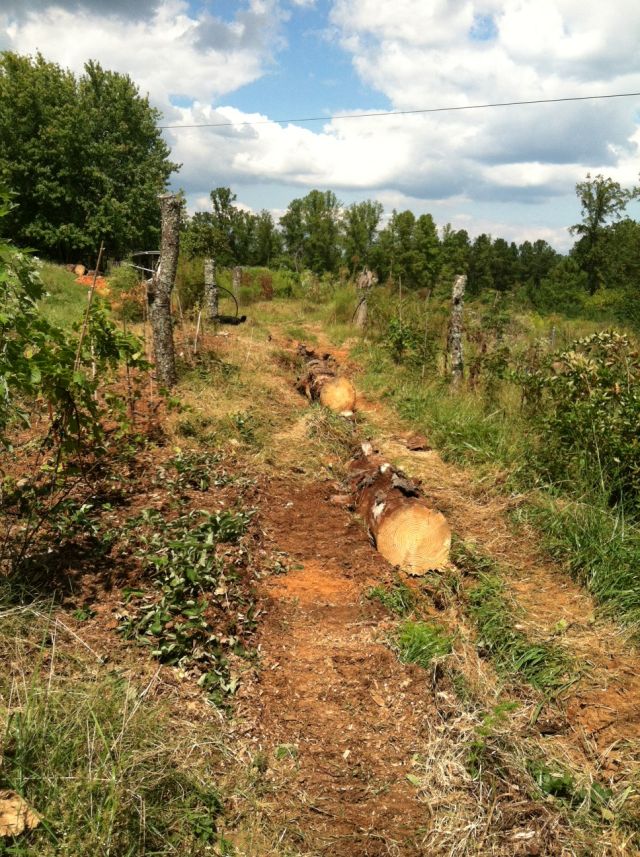When I began planting my vines and blueberry bushes in the field, Bermudagrass (also known as “devil grass” because it can be an highly aggressive difficult to eradicate weed) was not a problem. Yes it lurked among the broad bladed tall grasses but it was one of many. Now it is a major problem and it can thank me!
Bermudagrass is a wiry perennial (easy to cut your fingers if you are pulling hard on it), and is low-growing (hence easily checked by taller grasses) and it spreads by above ground shoots called stolons and below ground shoots called rhizomes. Every so often at a node on the shoot, a root is sent deep into the soil with at least two objectives: secure water in drought conditions, and act as an anchor to resist my eradication efforts.
I made two big mistakes. For each new planting I diligently dug out a 2 ft diameter hole, added a copious helping of my high grade compost and inserted and watered the new plant. This was mistake #1. Think of a house in a run down neighborhood which has been ignored until new occupants arrive with expensive possessions. The house attracts interest and invaders move in to seize the possessions. Previously it wasn’t worth the trouble, now there is booty and the risk of being caught (in the case of a weed, being plucked and ejected) is more than offset by the rich rewards. And who was the opportunistic invader – quick footed Bermudagrass stolons and rhizomes.
Its called the competitive exclusion principle where two species compete for the same niche – my high grade compost. The species with the greatest advantage will drive the other to exclusion. Blueberry bushes have short roots and they didn’t stand a chance and were overwhelmed by the Bermudagrass. As were too, my raspberries.

My logic had been that if I nourish and water the plants, they will quickly grow and outshade the competition. And this would probably have worked with the other grasses, but not against the overwhelming rapacity of Bermudagrass.
But I made a second mistake, which was just as devastating. I gave the Bermuda grass a decisive advantage over the other grasses competing for the 2ft circle. I mulched extensively with newspaper and woodchips. I first laid the newspaper, at least 8 pages thick, and then the 4″ layer of woodchips above so the chips would not compete with the shrub roots for nitrogen. The thick mulch effectively excluded all the other grasses and competition, but not the Bermuda grass. It quickly despatched scout rhizomes deep into the mulch and when they reported back on the superior quality of the compost an advance guard and then an entire regiment quickly invaded. So the deep mulching helped the Bermuda by favoring its competitive advantage of being able to delve in the dark into mulches on long exploratory missions and then to tunnel to the surface to capture sunlight.

I suspect, but cannot prove, that the Bermudagrass shoots may host agents which demoralize the roots of my shrubs (allelopathic?).
And now I am hard at work with deep digging to locate and remove the rhizomes. And this time I am using plastic edging to guard the frontiers, which I hope will stop most of the Bermudagrass, but I shall have to be continuously vigilant.
Contour ditches
In a previous post I mentioned that large grasses and plants had moved into my contour ditches, which were established to catch, retain and infiltrate rainwater sliding down the hill. Cleverly some of the plants established themselves on the walls of the ditch – thus they were close to the entrapped rainwater at the bottom of the ditch but did not have to endure having their feet in the water for extended periods of time. My solution, as previously mentioned was to stoke the ditches with tree trunks and branches (stoke as in stoking a fireplace). A year ago some large pine trees were brought down with base trunk diameters exceeding 36″. My bobcat cuts a 24″ wide trench. So today I chainsawed the trunks of the pine trees, which did not exceed a 24″ diameter, into 10 ft lengths and relocated them to one of my contour ditches. Rather than have the nutrients and organisms of the pine tree logs slowly dissipate into the air or the field, they will now be embraced by the soil in the ditch and nurture the roots of my plantings. Also they will prevent new weedy growth in the ditches and will absorb rainwater and retain it. Hopefully, this time round, a win win solution.

